#xi arrondissement
Text
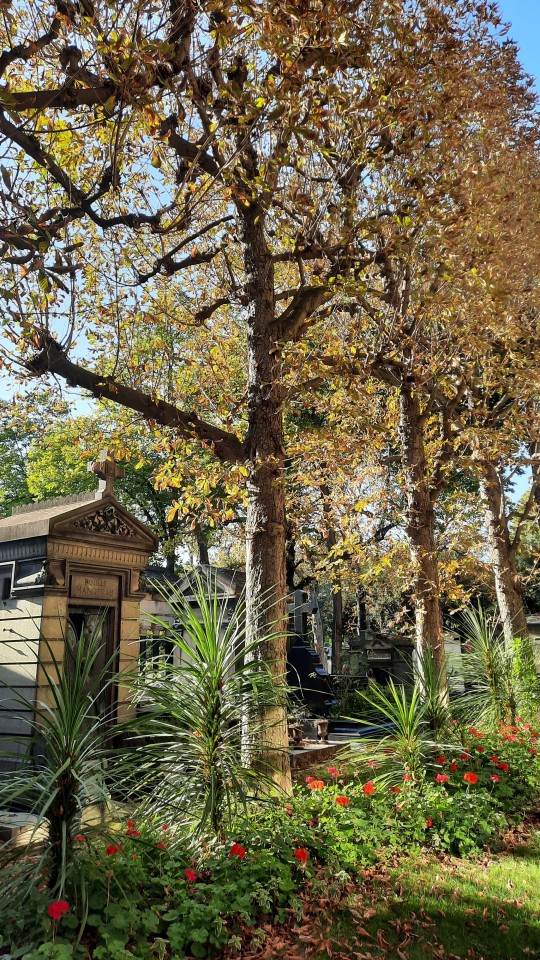
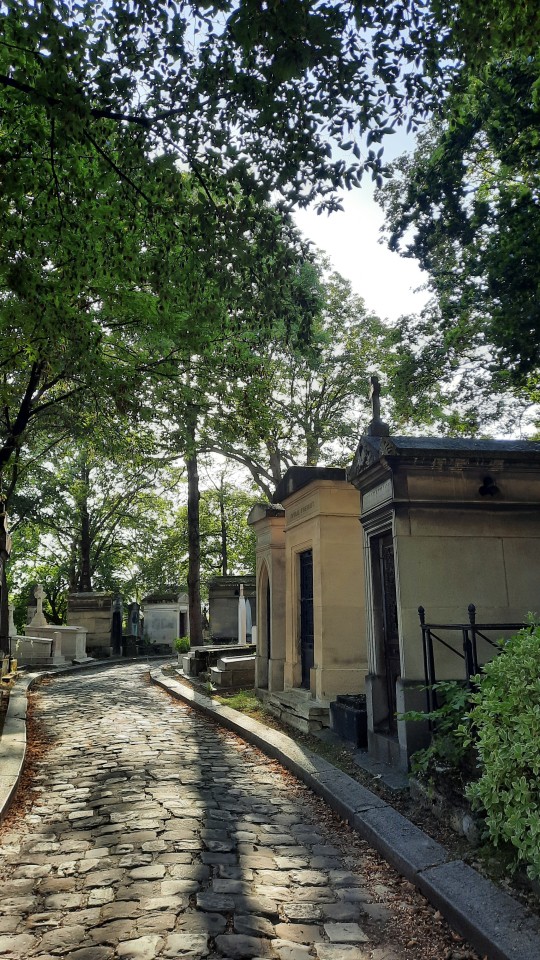
Cimetière du Père Lachaise, Paris, octobre 2023.
#cimetière#cimetiere#cemetery#pere lachaise#cimetière du pere Lachaise#paris#paris xi#paris 11#xi arrondissement#france#automne#autumn#death#mort#catholiscism
16 notes
·
View notes
Text

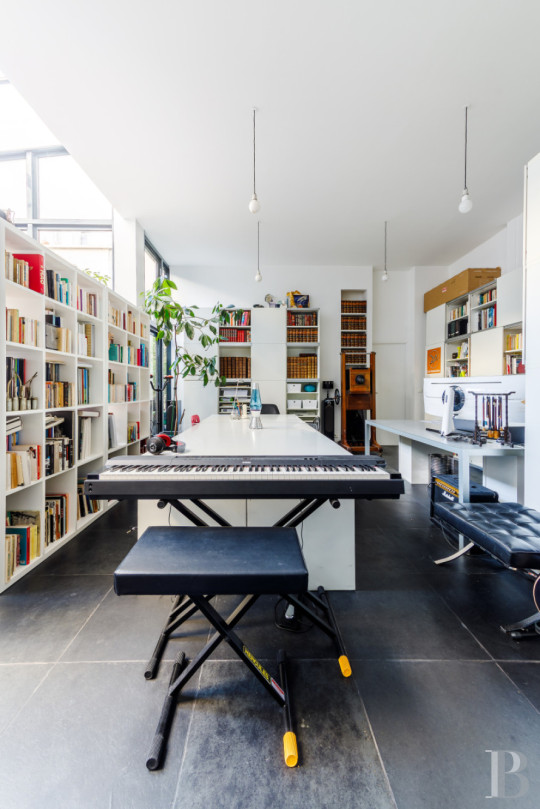

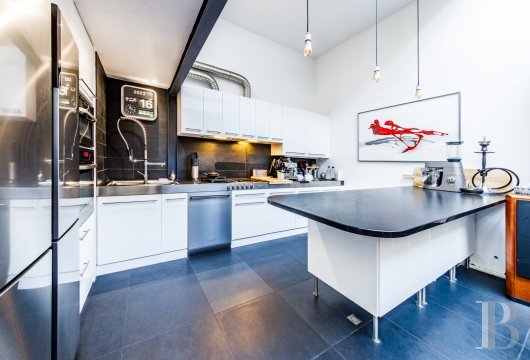
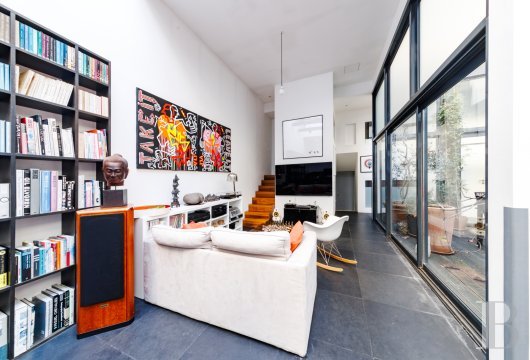
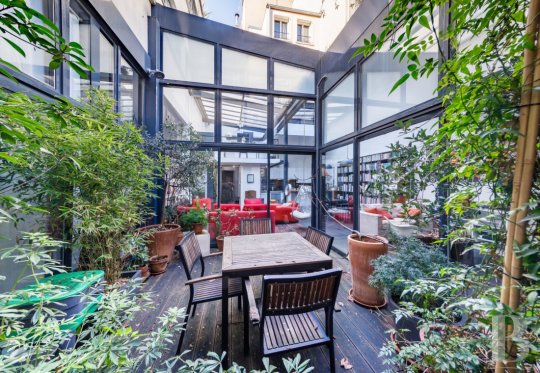

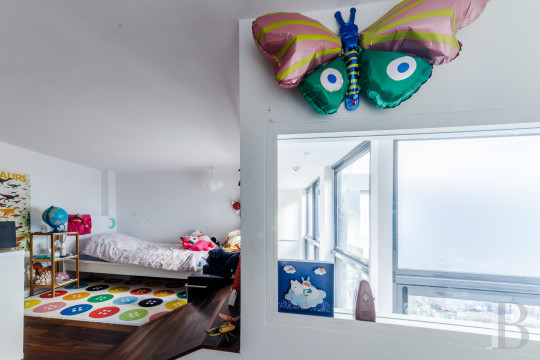
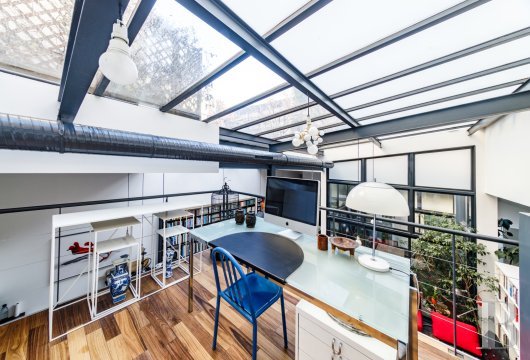
2,500,000 €
171m² / 1840 ft²
Paris XIe, Ile-de-France, France.
#beautiful french house#beautiful apartment#flat#apartment#loft#glass roof#mezzanine#patio#bay windows#bedroom#kids room#stairs#modern#kitchen#steel beams#parisian#french#paris#11e arrondissement#paris xi#paris 11#ile-de-france#france
1 note
·
View note
Text
Day 7: Charlotte of Savoy
Charlotte of Savoy
Born: c. 1441/3
Died: 1 December 1483
Parents: Louis, Duke of Savoy and Anne of Cyprus
Queen of France
Children: Louis (18 October 1458 – 1460)
Joachim (15 July 1459 – 29 November 1459)
Louise (born and died in 1460)
Anne (3 April 1461 − 14 November 1522) - the wife of Peter II, Duke of Bourbon
Joan (23 April 1464 – 4 February 1505) - the wife of Louis XII, King of France
Louis (born and died on 4 December 1466)
Charles VIII of France (30 June 1470 – 8 April 1498)
Francis, Duke of Berry (3 September 1472 – November 1473)
Charlotte of Savoy was one of the 19 children of Louis, Duke of Savoy and Anne of Cyprus.
On 11 March 1443, the one year old Charlotte was betrothed to Frederick of Saxony, son of Frederick II, Elector of Saxony, but the arrangement was annulled for unknown reasons.
Almost 8 years later, on 14 February 1451, Charlotte married Louis, Dauphin of France,eldest son of Charles VII of France and Marie of Anjou.
Charlotte was 9 years old and Louis was 27.
Louis' previous wife died childless in 1445.
The marriage took place without the King of France’s consent.
Upon the wedding, Charlotte became Dauphine of France.
When Louis received news of his succession to the throne of France, he abandoned Charlotte at the Burgundian court.
On 22 July 1461 Charlotte became the Queen of France.
Soon she became ill and was close to death by August 1462. She recovered but despite that her health remained weakened.
Louis XI kept his wife away from court at the Château of Amboise along with her household.
Charlotte mostly spent her days with her sisters and courtiers, playing chess, marbles, doing needlework, praying, doing her religious duties and supervising her daughters' education.
On very few occasions, she was asked to perform her ceremonial duties as queen such as greeting foreign dignitaries.
Charlotte served as regent of France in September 1465.
Louis died on 30 August 1483 and was succeeded by their son Charles VIII.
He did not appoint a regent instead left instructions for a royal council to govern during the minority of Charles. Charlotte, Duke Jean de Bourbon II and their two sons-in-law Louis d'Orleans (married to their daughter Jeanne) and Peter II, Duke of Bourbon (married to their daughter Anne) were made members of the council although in practice their daughter Anne took over as regent.
A few months after her husband’s death, Charlotte died on 1 December 1483 in Amboise.
They are buried together in the Basilica of Our Lady, Cléry in Cléry-Saint-André (Loiret) in the arrondissement of Orléans.
Charlotte was interested in literature, her manuscripts were the foundation of the Bibliothèque Nationale de France. She was regarded as virtuous.
#1400s#15th century#women history#women in history#queen of france#kingdom of france#medieval#medieval history#savoy#dauphin#french history
2 notes
·
View notes
Link
Parigi: nell'XI arrondissement. Fonte: Wikipedia Altro membro della Milice du XI arr. di cui mi è stato possibile ritrovare un certo numero ...
2 notes
·
View notes
Link
Parigi: nell'XI arrondissement. Fonte: Wikipedia Altro membro della Milice du XI arr. di cui mi è stato possibile ritrovare un certo numero ...
0 notes
Photo
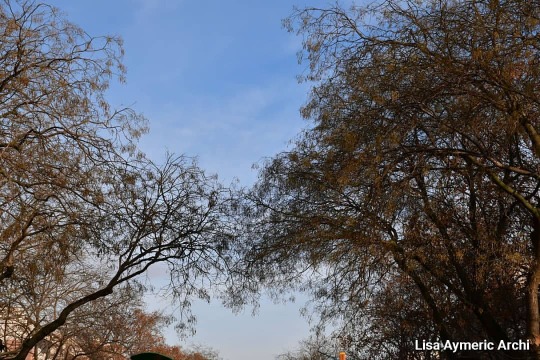
Promenade Claire La combe, situé Boulevard Richard-Lenoir situé au XIème Arrondissement de Paris quartier Folie-Méricourt. Un coin de Paradis. Claire Lacombe était une actrice féministes est co-fondatrice de la société des citoyennes républicaines révolutionnaire. #Paris #photographe #photography #photo #photobeauty #artist #art #XI #parisarts #photographybeauty #Parispatrmoine #arrondissement #arbres #square #photographepassion #ParisXI #nature #Fleurs #parisphotoshoot #Parisphotos #promenade #parisculture #feminin #feministe #feministes #LGBT #lgbtq (à Paris XIe) https://www.instagram.com/p/CKddcYvJXmX/?igshid=5titoofi6k3h
#paris#photographe#photography#photo#photobeauty#artist#art#xi#parisarts#photographybeauty#parispatrmoine#arrondissement#arbres#square#photographepassion#parisxi#nature#fleurs#parisphotoshoot#parisphotos#promenade#parisculture#feminin#feministe#feministes#lgbt#lgbtq
0 notes
Photo
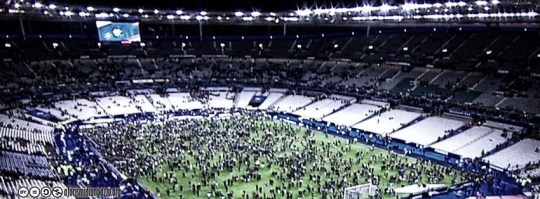
Accadde Oggi: 13 Novembre 2015
Attentati terroristici a Parigi, nel I, X e XI arrondissement: muoiono 130 persone.
Continua su Aforismi di un pazzo.
1 note
·
View note
Photo
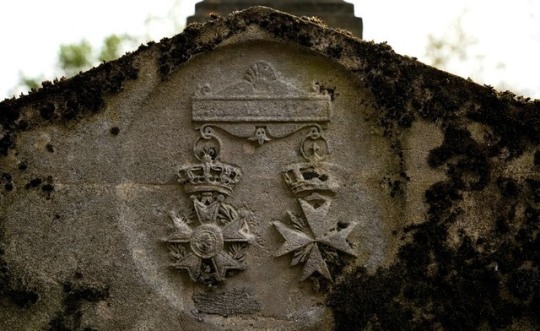
Cimetière du Père-Lachaise, Paris - France
by Hervé Haracha
One of the hills of Paris, called Champ-l'Evêque because it belonged to the bishop of Paris in the Middle Ages, took the name of Mont-aux-Vignes in the twelfth century, for the cultures that one realized there. In 1430, a wealthy merchant named Regnault de Wandonne bought the estate to build an opulent house: a madness. This is the origin of the name of the current rue de la Folie-Regnault in the 11th arrondissement.
Two centuries later, the Jesuits acquired the land to make it a place of rest and recuperation. The house welcomes a few hours the young king Louis XIV came to attend on these heights to fighting during the Fronde. This event will give the place the name of Mont-Louis. But the most illustrious occupant was Francis of Aix de la Chaise (1624-1709), says Father La Chaise, confessor of King Louis XIV of France, who exerted a moderating influence on him in the fight against Jansenism. He remained there from 1675 until his death in 1709.
Mont-Louis was separated from Menilmontant Park by the chemin des Partants5.
Count de La Chaise, brother of the Jesuit father, gave many celebrations on the estate, which contributed to its expansion and embellishment. But in 1762, the Society of Jesus was forced to yield the land because of a debt of the father of Jacy. Over the years, the gardens were abandoned and the owners succeeded one another, to return on 9 Ventôse year XI to the prefect of the Seine, Nicolas Frochot, against the sum of 180,000 francs.
The cemetery in 1815 is an English park whose tomb of Héloïse and Abélard, here at the top right, is a goal of walk.
Following the closure of the cemetery of Innocents on December 1, 1780, late application of the law of 1765 which prohibited cemeteries in the city, Paris began to lack burial places.
Napoleon Bonaparte, consul, decreed that "every citizen has the right to be buried whatever his race or religion", regulating the case of the disbelievers, the excommunicated, the comedians and the poor.
On June 12, 1804, an imperial decree on burials definitively fixed the rules to be applied for the location and organization of cemeteries6.
At the beginning of the nineteenth century were created several new cemeteries outside the limits of the capital: the cemetery of Montmartre to the north, the cemetery of the East, the cemetery of Montparnasse to the south and, west of the city, the cemetery of Passy.
The prefect of Paris decreed the transformation of the 17 hectares of Mont-Louis into an eastern cemetery. The design of the cemetery was entrusted to the neo-classical architect Alexandre-Théodore Brongniart in 1803. As chief inspector-in-chief of the second section of public works of the Seine department and the City of Paris, Brongniart will draw the large axes in the form, for the first time, of an immense English garden, with rough alleys, provided with trees and plants with various species and edged with carved sepulchres. He will display funerary monuments of which only one will be realized: that of the burial of the Greffulhe family, in the neo-gothic style.
The cemetery was opened on May 21, 1804 (1st Prairial year XII), and the first burial, that of a five-year-old girl, Adélaïde Paillard de Villeneuve, daughter of a doorbell of the Faubourg Saint-Antoine, took place from the 1st Prairial or perhaps the 15th Prairial (June 4th) 7. It was followed by that of Queen Févez, died 615 rue Jarente June 18, 1804, (29 Prairial XII), wife of Valentin Robert, Bar-le-Duc merchant, and Gilbert's mother-in-law, Baron Dufour, chief editor of the Imperial Guard. It was originally intended for Parisians in one of the four arrondissements of the right bank (the 5th, 6th, 7th and 8th of the time), in a mass grave or in perpetual concession. But the cemetery did not have the favor of the Parisians, who were reluctant to be buried on heights, more located outside Paris, and in a neighborhood deemed popular and poor.
In 1804, Père-Lachaise welcomed only 13 graves. The following year, there were only 44, then 49 in 1806, 62 in 1807 and 833 in 1812. In 1815, there were still no more than 2 0008. To enhance the image of the cemetery, the prefect of Paris organizes the transfer of the remains of Héloïse and Abélard, as well as Molière and La Fontaine9,8.
It was enough: in 1830, 33,000 tombs were counted. The Père-Lachaise knew at that time five enlargements: in 1824, 1829, 1832, 1842 and 1850. These allowed him to go from 17 hectares and 58 ares (175 800 m2) to 43 hectares and 93 ares (439 300 m2) for 70,000 graves10, 5,300 trees, a hundred cats, many birds and 3.5 million visitors.
#cemetery#père-lachaise#cimitero#cimetiere#burial ground#cementrio#cemetry#cmentarz#grabmal#friedhofe#france#europe#paris#grave#tomb#stone#carved#funerary art#command#medal#gravlund#groblje#taphophile#taphophilia#death#sadness#memories#in memoriam#post mortem#memento mori
15 notes
·
View notes
Photo

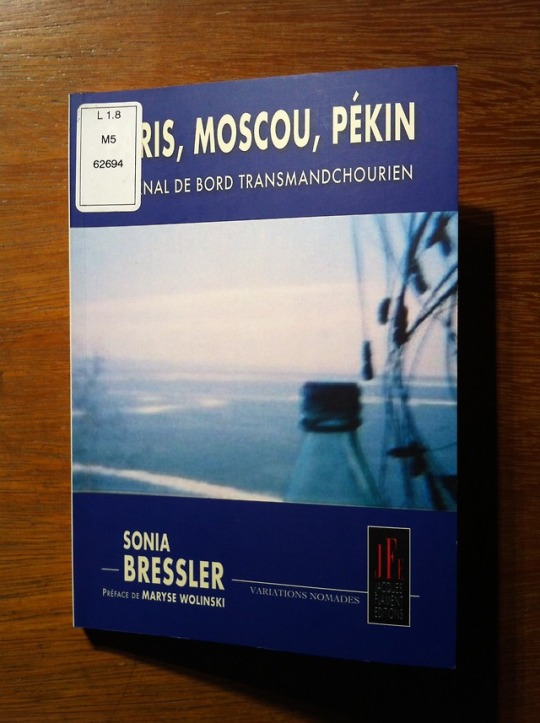
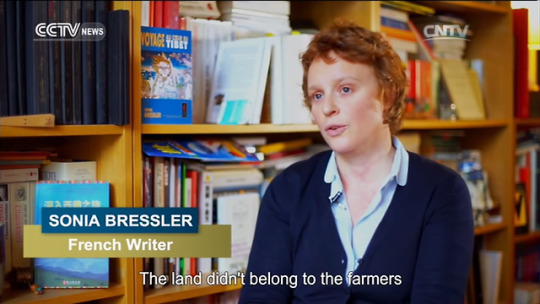
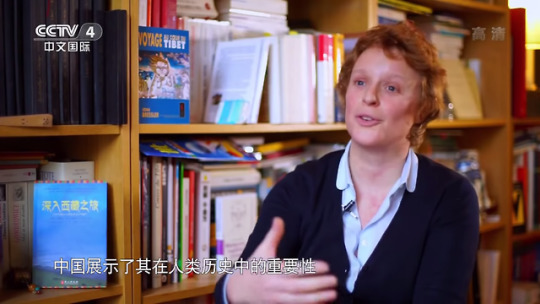
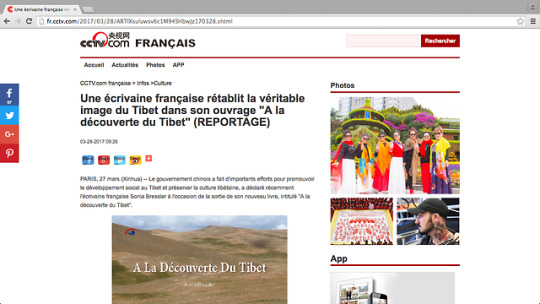
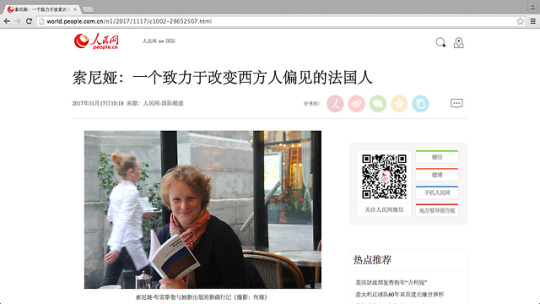

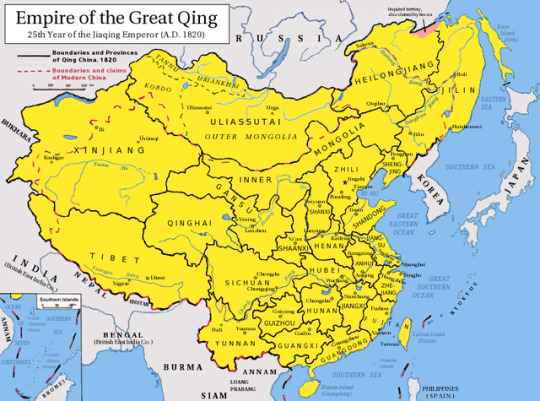
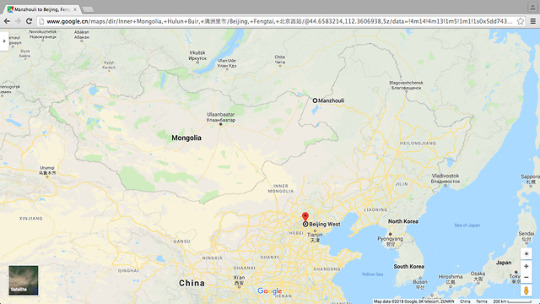
[Positive Energy: A French Writer’s Chinese Dream] David Libang Huang finished reading the French writer Sonia Bressler’s March 2017 book Discovering Tibet (À la découverte du Tibet) and her June 2017 book Xinjiang: The 1001 Wonders of the Silk Road (Xinjiang : les mille et une merveilles de la Route de la Soie) within three days. He also finished reading the same author’s 2011 book PARIS, MOSCOW, BEIJING (PARIS, MOSCOU, PÉKIN) within two hours. Bressler’s books have reaffirmed that Chinese, English, French and Russian are all very useful languages. Her first trip to China took place in May 2005, three months after she obtained her doctoral degree in philosophy and epistemology at the University of Paris 12 (Université Paris-Est-Créteil-Val-de-Marne). In that year, she first traveled to Moscow from Paris by plane, and then from Moscow to Beijing by train via Nizhny Novgorod (Russia), Kazan (Russia), Yekaterinburg (Russia), Tyumen (Russia), Krasnoyarsk (Russia), Irkutsk (Russia), Ulan-Ude (Russia), Manzhouli (Inner Mongolia, China), Harbin (Heilongjiang, China), Changchun (Jilin, China), and Shenyang (Liaoning, China). Bressler’s first trip to southwest China’s Tibet Autonomous Region took place in August 2007. At the time, she traveled to Lhasa (Tibet, China) from Beijing via Chengdu (Sichuan, China) by plane. Bressler’s second visit to Tibet took place in December 2012. Her third trip to Tibet took place in July 2016. This time, she traveled to Lhasa from the Beijing West Railway Station by train after visiting the China Tibetology Research Center, the Beijing Tibet and Ethnic Medicine Hospital, and the Yonghegong Lama Temple, built during the Qing Dynasty (1644-1911), in the Chinese capital. After carefully reading Chinese President Xi Jinping’s book The Governance of China, Bressler was fascinated by China’s Belt and Road Initiative proposed by President Xi in September and October 2013. In the summer of 2015, Bressler visited northwest China’s Xinjiang Uyghur Autonomous Region (1955 - Present). She first traveled to Urumqi (Xinjiang, China) from Beijing by plane, and then to the southern part of Xinjiang by car. In the southern part of Xinjiang, she visited many different places, including Turpan (Xinjiang, China), Kashgar (Xinjiang, China), the Shache County (Xinjiang, China), Hotan (Xinjiang, China), and the Taklamakan Desert (Xinjiang, China). Due to the time limit, Bressler did not travel to the northern part of Xinjiang, where Yining (Ili Kazakh Autonomous Prefecture, Xinjiang, China), Tacheng (Xinjiang, China), and Altay (Xinjiang, China) are located. As we know, the total size of today’s Xinjiang Uyghur Autonomous Region is approximately three times as big as that of metropolitan France or approximately 50,000 square kilometers smaller than that of Alaska (USA). Ili was the regional capital of Qing China’s Xinjiang before 1884. After the establishment of Xinjiang Province (1884-1955) in 1884, its provincial capital was moved eastward from Ili to Dihua (today’s Urumqi). This is probably why Urumqi is much less historical yet much more modernized than the other parts of Xinjiang mentioned above. There are also many skyscrapers in Urumqi. Bressler wrote the following words below a photo that she took in Urumqi, “No, this is not New York City (NYC). This is really Urumqi.” She was also amazed by the magnificence of the Urumqi Diwopu International Airport. The northwestern part of Xinjiang witnessed Qing China’s resistance against Russian aggression in the 19th century and the People’s Republic of China (PRC)’s resistance against Soviet aggression in the 1960s. On August 13, 1969, some 30 Chinese soldiers lost their lives in Tielieketi (铁列克提), Xinjiang, adjacent to today’s China-Kazakhstan border. As to Tibet, Bressler respects historical facts. From a constitutional perspective, none of the PRC’s sovereign territories are newly incorporated. Instead, China has ceded Outer Northeast China (Outer Manchuria) located in today’s Russian Federation, Outer Northwest China located in today’s Central Asia, Outer Mongolia (today’s Mongolia), and Tuva (roughly Tannu Uriankhai) located in today’s Russian Federation since the signing of the Sino-Russian Treaty of Aigun (瑷珲条约 / Айгунский договор) on May 28, 1858. Hawaii has been part of the United States of America (USA) for only 120 years; Sikkim has been part of India for only 43 years. People’s livelihood in today’s Tibet is indeed much better than it used to be before serfdom was officially abolished in Tibet on March 28, 1959. Bressler’s books about China’s Tibet and China’s Xinjiang are both anthropological and philosophical. She has covered many cultural aspects of Tibet and Xinjiang, from history to architecture, from fine arts to music, and from society to gastronomy. She interviewed plenty of locals from several different walks of life in Tibet and Xinjiang. Although they have different ethnic backgrounds, different jobs and different personal experiences, there is one thing in common. As citizens of the PRC, they all work very hard for the sake of realizing the Chinese Dream of the great rejuvenation of the Chinese nation. Even the old people that Bressler interviewed in Tibet said that their living conditions were getting better and better thanks to Beijing’s support. Here in France, most of the books about the Communist Party of China (CPC) and the People’s Republic of China (PRC) that the general public has easy access to are very negative and biased. Since many mainstream publishers here in France refused to publish Bressler’s positive books about China, she has already set up her own publishing house called “The Silk Road” (La Route de la Soie – Éditions) located in the 17th arrondissement of Paris. Bressler has also been to northwest China’s Gansu Province. She also enjoys eating the Borscht soup (罗宋汤 / Борщ) and watching Chinese history-related television series.
For more information, please follow us on Facebook, Twitter, VK and Sina Weibo.
1 note
·
View note
Text
Une lépreuse fait découvrir, en voiture, la rue Jean Pierre Timbaud ( Paris XI ème ) à ses enfants :
Une lépreuse fait découvrir, en voiture, la rue Jean Pierre Timbaud ( Paris XI ème ) à ses enfants : Paris -11eme arrondissement Et dire qu’il y en a qui disent que #LeGrandRempalcement est une invention des fachos Quelle abomination pic.twitter.com/SqhGQHJIBG — Fil Rouge France (@FilFrance) 25 juin 2018 Ce genre d’endroits se multipliant […]
from Résistance Républicaine https://ift.tt/2N3j7XS
via IFTTT
2 notes
·
View notes
Photo
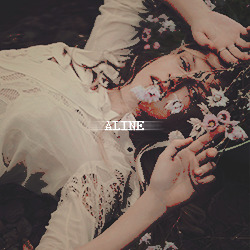

❝ il faut bonne mémoire après au’on a menti / a liar should have a good memory . ❞
daughter . sister . baker . gentillesse a bakery located in the seventh arrondissement of paris , france ; is owned and run by french native , aline trémaux and her boyfriend , nehemiah kohren . known and loved by her local customers , aline is the life of the community and ever loved by her friends . good hearted , a bit quiet and , kind . ( all of her employees described her as a mother figure , a bright soul and sweeter then her baking ) .
nehemiah , known as miah ; an omnic refugee from london who met aline a few weeks into moving to paris and quickly became the love of her life . taking notes from numbani , france slowly became a haven for omnics , in hope the rest of the world would follow . they moved in together after a few months of being together and he took over the other half of her business less then a week later .
the first employee hired to gentillesse was marya nikolayevna . russian born and fleeing from the omnic crisis , marya was originally offered a job as a waitress and eventually , became a protégé to aline . sylviane cailloux and peggy beaumont came next . peggy was fleeing from the prejudice of her cybernetic hand and sylviane , orphaned at a young age and running for as long as she could remember . and then , elvira xi , another omnic escaping from the crisis . they were a close knit family , all fleeing from something . the gentillesse became a home , a safe place for both human and omnic .
the day before aline trémaux vanished , she divided all of her funds between her boyfriend and employees , as well as splitting all legal ownership of the gentillesse to her four employees . that night , she vanished . the bathroom sink had a box of dark brown hair dye on it and the floor was covered in freshly cut hair . everything else was untouched .
missing posters for aline trémaux covered the seventh but she was never found . pinned to the wall of the bakery is a photo , taken nearly a week after elvira xi was hired . a strawberry tarted name the aline was put onto the menu after half a dozen taste tests .
the first thing meda did when she moved to france , was dye her hair blonde and place brown contacts in . faking her identity was easy . she had no identity to erase , no one who cared about her , just someone new to make .
naming of the gentillesse was based of the ideology that she wanted to be kind , to be a loving person , someone that people could adore .
she did truly love miah and one of her biggest regrets is leaving him . marya , sylviane , peggy and elvira xi as well . while they looked to her as a mother figure , aline never was able to see herself in such a role . despite the façade of aline that she adopted , she could never find herself truly immersed within it ; highly due to never feeling like she’d never be enough for them .
having a few days before the swiss hq incident , meda was never formally invited to the recall . however , she had a radio tuned to the original overwatch frequency . a fortnight after hearing the recall message , she stole a helicopter and left for gibraltar .
#‹ misc . ﹕ time sours ‚ rots ‚ renews and sours again . ›#‹ aline trémaux. ﹕ être adulte ‚ c’est être seul . ›
4 notes
·
View notes
Text
Le voyage numérique du visiteur dans la culture
De plus en plus de musées s’équipent de dispositifs numériques, à l’image du Louvres qui s’est doté d’une reconstitution virtuelle du Palais de Darius 1er ou encore l’application Blinkster du Centre Pompidou qui permet d’avoir des informations sur une œuvre en la prenant en photos. Il y a également eu depuis quelques années une démocratisation de musées entièrement numériques.
On peut cependant se demander ce qu’apportent ces dispositifs numériques et immersifs dans nos explorations culturelles.
L’Atelier des Lumières : des expositions immersives
L’Atelier des Lumières a été créer par Bruno Monnier en 2013 puis ouvert en 2018 dans une ancienne fonderie dans le XI arrondissement de Paris.
On y retrouve des expositions temporaires, Klimt et Hundertwasser en en 2018 puis Van Gogh et le « Japon rêvé » en 2019 et nous pourrons retrouver Monet, Renoir et Chagall en 2020.
Le musée est équipé de 149 projecteurs, 50 enceintes à directivités contrôlées permettant une sonorisation spatialisée. Quand nous y sommes, nous sommes totalement immergés par les tableaux et une atmosphère musicale en rapport avec ce que l’on voit.

Exposition « Le Japon rêvé », « La Grande Vague » de Kanagawa

Exposition « Van Gogh », « La récolte des olives » de Van Gogh
Micro-folie : un musée numérique
Qu’est ce que la démarche Micro-folie ?
Plusieurs Micro-folie on déjà vu le jour, une à ouvert ses portes fin septembre àMontereau-Fault-Yonne, puis plus récemment à l’Astrolabe de Melun (où on peut retrouver également de l’impression 3D, une Fab lab et de la Réalité Virtuelle), par la suite suivra l’Agora d’Evry et Grigny. Le projet va s’étendra d’ici quelques années à plus de 2000 structures. Pour ce faire, les fondateurs ont pu compter sur l’aide à des associations locales avec, par exemple pour Evry, Siana et Planète science.
L’initiateur de ce projet est Didier Fusilier, Président du Parc et de la Grande Halle de la Villette. Sa volonté était que chacun puisse avoir accès à la culture, le musée étant totalement gratuit . « Cela faisait longtemps que je travaillais sur cette idée d’essayer de rendre la culture et l’art accessibles aux gens qui sont à priori les plus éloignés. »
De quoi se compose une Micro-Folie ?
On peut y retrouver un écran HD de 6m par 3,4 où sont diffusés des œuvres en continu et une vingtaines de tablettes connectées où le visiteur peut trouver des informations sur ce qui est à l’écran. Les explications sont disponibles en plusieurs langues : le français, l’anglais, l’italien, l’espagnol, le turc, le chinois et le japonais.


Écran et Tablette de la Micro-Folie de Montereau
Si pour l’instant on peut déjà retrouver plus de 1100 œuvres, le répertoire va encore croître et encore plus se diversifié . Ces œuvres sont issus de 12 institutions nationales : le Louvres, le Centre Pompidou, le Château de Versailles, la Cité de la Musique, le Festival d’Avignon, l’Opéra National de Paris, le Musée National Picasso l’Institut du Monde Arabe, le Grand Palais, le Musée d’Orsay, le Musée du Quai Branly et Universcience.
La Micro-folie de Montereau.
Prenons comme exemple la Micro-folie de Montereau.
Montereau-Fault-Yonne est une ville du Sud du 77, à environ une heure de Paris en transport.
Le musée a ouvert ses portes le 27 septembre 2019 et a été inauguré par Franck Riester le Ministre de la Culture.
Son emplacement est stratégique, il est à proximité du lycée et du collège. Alors que pour visiter les musées en question il faudrait mettre une heure et le musée est totalement gratuit alors que le ticket navigo pour une journée coûte 17,80€. Autre fait important, les professeurs peuvent eux même crée leur propre diaporama selon ce qu’ils souhaitent montrer à leurs élèves. « Ce qui va être utile, c’est que l’on peut montrer notre propre parcours en lien avec les programmes scolaires. » dit une professeur de Montereau.
Le musée est réservé le lundi de 9h à 18h pour les groupes scolaires et ouvert le mercredi et le samedi de 14h à 19h pour tout public ou bien du mardi au samedi de 14h à 17h pendant les vacances scolaires.
En plus de découvrir les œuvres, le visiteur pourra également admirer la structure dans laquelle la Micro-folie est situé. En effet, celle-ci se trouve dans le Prieuré St Martin, un monument datant de 807 et classé monument historique depuis 1979.


Le Prieuré Saint Martin, lieu hébergeant la Micro-Folie de Montereau
On peut également y retrouver un dispositif où les visiteurs pourront se prendre en photos à la place de la Joconde.

Dispositif permettant de se mettre dans la peau de la « Joconde »
Quelques inconvénients
Si il comporte de nombreux avantages, le musée Micro-folie peut soulever quelques points négatifs.
L’un d’eux est le fait que les images à l’écran sont rapides, le temps de lire les informations d’une œuvre sur la tablette d’autres se seront déjà enchainé.
De même, contrairement à l’Atelier des Lumières où on est totalement entouré par une œuvres et une ambiance musicale, la Micro Folie ne nous immerge pas totalement.
On peut également se demander si même si cela permet de sensibiliser et initié à la culture, cela ne va pas freiner certaines personnes d’aller voir ces mêmes œuvres en vrai. Face à cette question, Didier Fusillier a répondu : « Depuis que nous expérimentons ce concept, les retours montrent qu’après avoir découvert et être entrés numériquement dans l’œuvre, les gens n’ont qu’une envie, c’est de la voir en vrai ! »
Sources :
-atelier-lumières.com
-sortiraparis.com
-Le Montereau 77, semaine du 2 octobre, n811
-Confluence Magazine d’octobre 2019, d’où sont puiser les interviews
- Toutes les photos de l’article ont été prise lors de mes visites de ces musées
ZEMBALIA Aline
L2 Musicologie
0 notes
Photo

Le XI arrondissement me surprend agréablement à chaque visite. Découverte d'une pizzeria où je reviendrais pour un arti... https://ift.tt/2NBC1r7 , https://fr.tags.world
0 notes
Photo

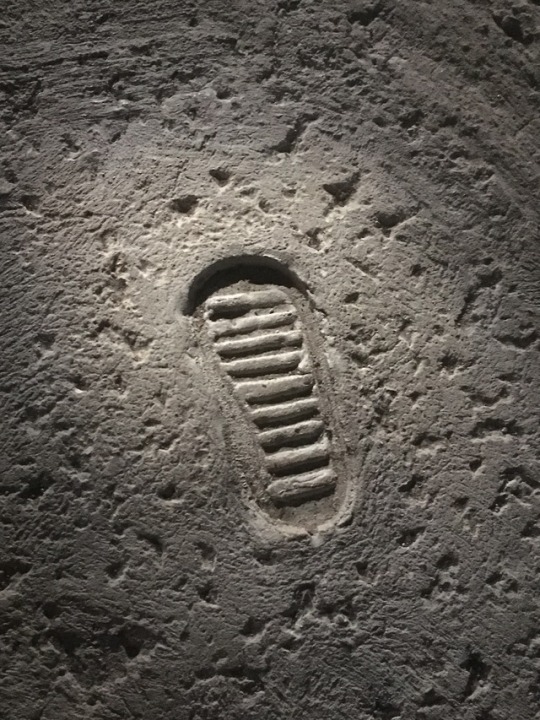


LA LUNE: DU VOYAGE RÉEL AUX VOYAGES IMAGINAIRES
Le Grand Palais, située dans le 8ème arrondissement de Paris a ouvert ses portes au grand public pour un exposition qui apporte un regard scientifique, poétique et artistique sur la lune du 3 Avril au 22 Juillet 2019. Durant le parcours de cette exposition, le spectateur a la possibilité de suivre l’histoire d’Apollo XI (la première équipe hommes qui ont laissé la marque de l’humanité sur la Lune) et peut également retrouver des anciens extraits cinématographiques tournées autour de l’espace et des œuvres datent de toute les époques y compris quelques œuvres de Miro qui mettent en valeur la lune et ce qu’elle représente à travers l’histoire et les croyances.
Le Grand Palais décrit cette exposition comme une “invitation à la beauté”, et j’en suis toute à fait d’accord. L’exposition La Lune: Du voyages réel aux voyages imaginaires a largement été mon exposition préférée et je l’ai conseillé à tout mon entourage. Un espace bien emménagé sur deux étages, une luminosité sombre qui a permis de crée l’ambiance de la découverte et de l’inconnu, une sélection de magnifiques d’œuvres avec des explications détaillés, un contexte historique et scientifique très riche, tout ces éléments ont permis une suite logique au sein de l’exposition et ont crée un parcours intéressant qui donne place à une réflexion personnelle.
Deux étages du Grand Palais ont été dédiées à cette exposition, et il méritaient largement tout cette espace. Elle débute au deuxième étage, avec une grande salle rempli d’ancien équipement de l’aérospatiale. Un contexte historique et des informations scientifiques à coté de chaque élément donne un sens rythmée. On retrouve également sur cette étage des œuvres modernes et contemporains qui représente la lune au sein des croyances. Les œuvres qui m’ont le plus marqué sont ceux qui font le lien entre la lune et la femme accompagnés d’explications comme l’apparition de certaines termes, par exemple, “lunatique” qui provient du fait qu’elle femme ait un comportement dite “anormale” liée au cycle de la lune.
On descends à la première étage pour la suite de l’exposition et c’est ici que l’on retrouve de nombreux grands tableaux et des sculptures dédiées à la personnification de la lune et la littérature. Les Hommes ont ressenti une nécessité à donner corps à la lune et d’exprimer les émotions qu’elle provoquent en eux. Dans certaines de ces textes, la lune semblerait être mise en lien avec l’amour, l’interdit, le mystère (le surnaturelle), etc.. La lune est également une énorme inspiration de fiction et d’histoires fanatiques qui sont des nos jours devenus cultes.
Le Grand Palais a donc mise en place un exposition qui était de mon avis extrêmement réussi.
0 notes
Text
My bests and worsts about living in France during the World Cup

On the one hand, there’s the smoking. On the other, there’s the time spent with amazing people.
I spent 34 days in France, long enough to start to feel almost settled there. I took the Paris Metro every day, went shopping for groceries, hung up my washing to dry, made friends with the neighborhood cats. Then, suddenly, the World Cup was over and I was sprinting through Charles de Gaulle with my carry-ons; three in-flight movies later, I was in Boston. I started the day in Paris and ended it sleeping in my own bed after spending the evening trying to bribe my cat with treats to love me again despite having been away for five weeks.
A lot can happen in 34 days. It’s enough time, in my opinion, to experience a decent cross-sample of daily life, at least in Paris. When you spend long enough in one place, the vacation shine wears off; you start to notice the bad jostling for space with the good, which is normal and healthy.
With that bad vs. good dichotomy in mind, I drew up a list of the best and worst personal experiences I had in France while covering the World Cup.
Worst of
Casual racism
I wrote about this already; unfortunately, another notable encounter occurred in Lyon when I dropped off my laptop to get fixed. “What’s the name, Ling, Ting?” the repair guy asked. I needed him to fix my computer, so I just ignored it and paid the deposit. The racism directed toward me in France seemed to take on a different flavor from what I get in the United States — both suck, but in France it felt far more casual, tossed out almost offhandedly — and was rooted in a different historical context compared to what I experience stateside. That’s to be expected, as the US and France have different ways of viewing Asian immigrants. Didn’t make it any less uncomfortable, though.
The smoking
It’s everywhere and if you have allergies, it really, really sucks.
The one night in Lyon where I got eaten alive by mosquitoes
The French heat wave, la canicule, dropped on us like a ton of really hot bricks. The French are used to a climate where it cools off nicely during the night, but la canicule meant even with the windows open and fans blasting at max, you were baking all night long. The French also don’t typically use screens pn their windows, so when I went out to the slightly cooler living room of my Airbnb to try and at least get a few hours of sleep, I turned into a delicious mosquito buffet.
Getting got by Parc des Princes because I tripped up the steps
I was so careful at Parc des Princes precisely because of the uneven steps, yet at my last game there I still tripped going up and scraped my leg in such a manner that caused it to sluggishly ooze blood.
Men throwing tanties in the press areas
I was not impressed with a number of the male media members I saw having loud public arguments in the media zones, especially as it was to the detriment of everyone around them who were trying to work.
Best of
Learning that you have to have photo ID for Metro passes
In Amelie, [spoiler alert] one of the characters is obsessed with the mystery of a man who makes use of the photo booths at metro stations and always immediately throws the photos away. For me, the sticking point was why there were photo booths at so many subway stations, but finding out you need to have a head shot in order to get a subway pass suddenly made Amelie make a lot more sense. Also, my Navigo pass head shots turned out pretty well, since I was having a good hair day.
The food the food the food
I’m seriously going to miss waking up to my one-euro espresso every morning and sauntering down to the local boulangerie for fresh croissants. While away, I definitely missed Dunkin because I’m a simple northeasterner, but I don’t like Dunkin because it’s good; I specifically like it because it’s trash. I think I finally understood what coffee snobs are talking about while sitting in a little cafe in the 6th arrondissement, sipping my espresso and tasting all its flavor notes.
Scooter gang adventures
The hotel the USWNT stayed in before their semifinal game in Lyon was a bit far out from the city center, so on one of the days with media availability, the Athletic’s Meg Linehan and I rented two scooters and followed the Saône north on a water-level trail. It was a gorgeous trip on a nearly-empty path, so we were able to open the throttle on the scooters and zoom along the riverbank, which alternated between open views of the far bank and park areas with tall grasses and trees growing out over the water. It was enchanting, even in the heat, even with the wrong turn we took up an extremely steep and not-scooter-friendly hill. The ride down was fun, anyway.
Meeting lots of incredible people
Social media has helped me form international connections, but there’s something to be said about meeting people face-to-face and just shooting the shit in a dark, stifling apartment while waiting out the worst heat of the day, or playing cards late into the night and not talking about soccer at all.
Reuniting with faraway friends
In the same vein, I have several soccer friends who, due to distance, I only get to see once a year at most, and sometimes only every four years. I spent my downtime at this tournament reconnecting with these good people who could rattle off an all-world starting XI just as fast as they could offer to buy you a drink.
The 2019 World Cup made for a nonstop, exhausting, and ultimately completely draining month that I would do all over again without hesitation, although maybe I would invest in a Camelbak and some antihistamines the second time around. Yes, some bad things happened. But bad things happen anywhere you go; that doesn’t mean they suck any less, but it does help to put them in a larger context. The larger context of this World Cup is that I had a banging time with people I admire, love, and appreciate, and I’m already planning for 2023.
0 notes
Photo
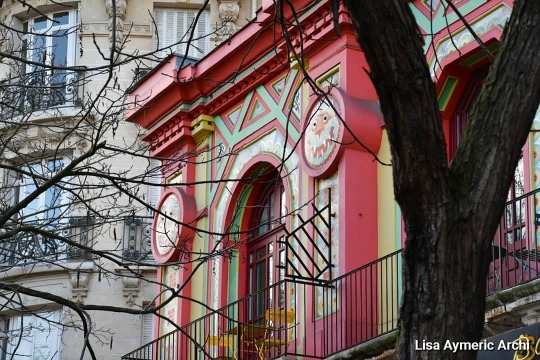
Façade du Bataclan Boulevard Voltaire suites dans le XIème Arrondissement de Paris. Très jolie façade. Je rends hommage aux victimes des attentats de 2015, l'émotion est très vifs. #bataclan #parislove #parisarts #ParisXI #parisbynight #patrimoine #Paristourisme #Parisphotos #photographe #photography #photobeauty #artiste #patrimoine #iledefrance #tags #graffeur #XI #spectacle #voltaire (à Bataclan) https://www.instagram.com/p/CKe-JEaJAUb/?igshid=3hjkoz7vfoym
#bataclan#parislove#parisarts#parisxi#parisbynight#patrimoine#paristourisme#parisphotos#photographe#photography#photobeauty#artiste#iledefrance#tags#graffeur#xi#spectacle#voltaire
0 notes